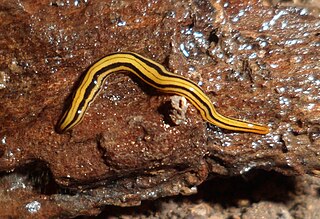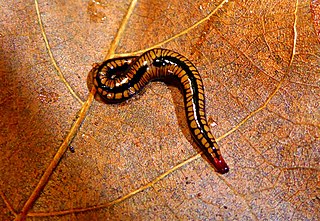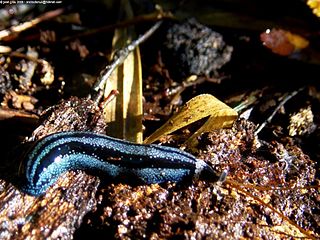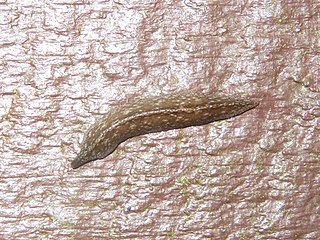
Bipalium is a genus of large predatory land planarians. They are often loosely called "hammerhead worms" or "broadhead planarians" because of the distinctive shape of their head region. Land planarians are unique in that they possess a "creeping sole", a highly ciliated region on the ventral epidermis that helps them to creep over the substrate. Several species are considered as invasive to the United States and to Europe. Some studies have begun the investigation of the evolutionary ecology of these invasive planarians.

Microplana is a genus of land planarians found in Europe and Africa.

Luteostriata is a genus of land planarians from Brazil characterized by a yellow body with dark longitudinal stripes.

Obama is a genus of land planarians from South America. It contains several species adapted to human-disturbed environments, including the only invasive land planarian native to the Neotropical realm, Obama nungara, which has been accidentally introduced in Europe.

The reproductive system of planarians is broadly similar among different families, although the associated structures can vary in complexity.

Pasipha is a genus of land planarians from South America.

Geobia is a monotypic genus of land planarians from South America.

Othelosoma is a genus of land planarians found in Africa and India.
Gusana is a genus of land planarians found in Chile.
Liana is a genus of land planarians. It is monotypic, being represented by the single species Liana guasa, which occurs in Chile.

Kontikia is a genus of land planarians native from islands in the Indo-Pacific region, but several species have been introduced elsewhere.
Tasmanoplana is a genus of land planarians from Australia.
Pelmatoplaninini is a tribe of land planarians in the subfamily Rhynchodeminae.

Humbertium is a genus of land planarians of the subfamily Bipaliinae.

Diversibipalium is a genus of land planarians of the subfamily Bipaliinae. It was erected to include species lacking sufficient morphological information to allow them to be classified in the appropriate genus.

Pseudogeoplana is a genus of land planarians of the subfamily Geoplaninae. It was erected to include species lacking sufficient morphological information to allow them to be classified in the appropriate genus.

Australopacifica is a genus of land planarians of the tribe Caenoplanini. It was erected to include species lacking sufficient morphological information to allow them to be classified in the appropriate genus.
Anisorhynchodemus is a genus of land planarians of the tribe Rhynchodemini. It was erected to include species lacking sufficient morphological information to allow them to be classified in the appropriate genus.
Statomicroplana is a genus of land planarians of the subfamily Microplaninae. It was erected to include species lacking sufficient morphological information to allow them to be classified in the appropriate genus.
Beauchampius is a genus of land planarians in the tribe Pelmatoplaninini.












